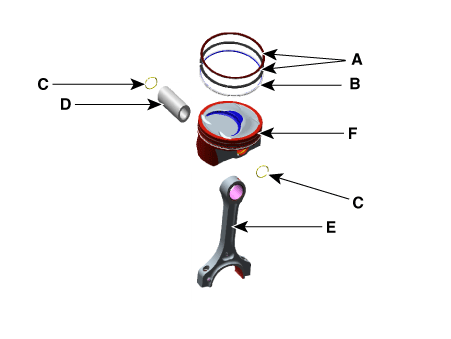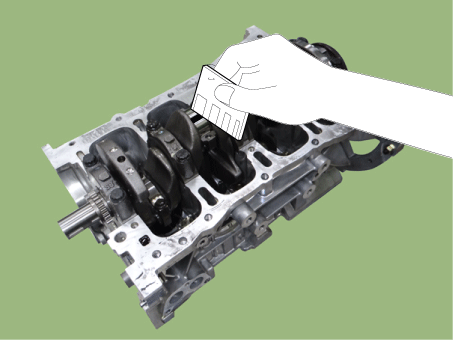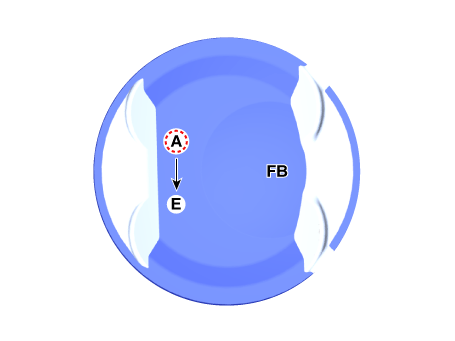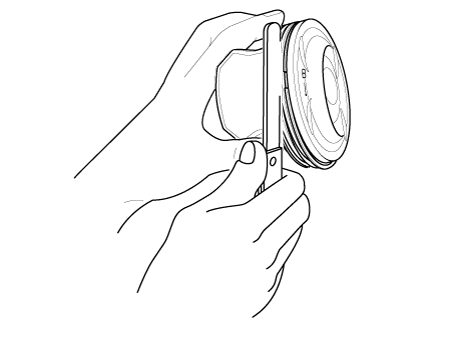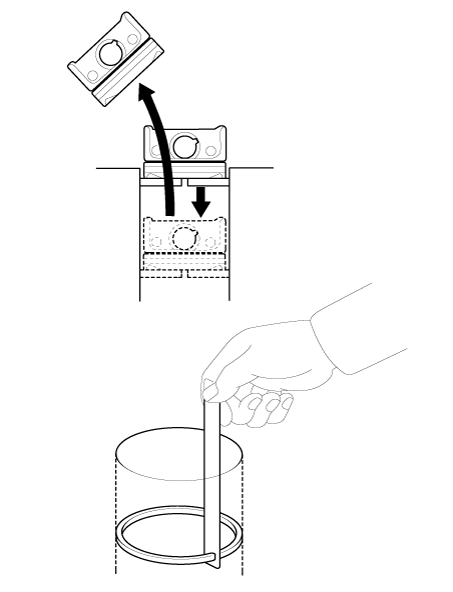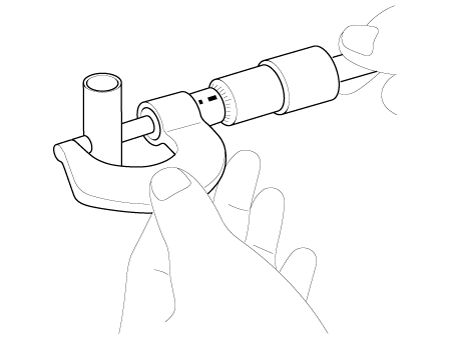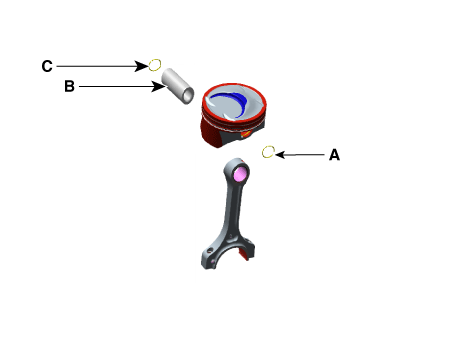Kia Stinger: Cylinder Block / Piston and Connecting Rod
Repair procedures
| Disassembly |
In case of removing the high pressure fuel pump, high pressure fuel pipe, delivery pipe, and injector, there may be injury caused by leakage of the high pressure fuel. So don’t do any repair work right after engine stops. |
|
Mark all wiring and hoses to avoid misconnection |
| 1. |
Remove the engine and transmission assembly. (Refer to Engine and Transmission Assembly - "Engine and Transmission Assembly") |
| 2. |
Remove the automatic transmission. (Refer to Automatic Transmission System - "Automatic Transmission") |
| 3. |
Remove the drive plate. (Refer to Cylinder Block - "Drive Plate") |
| 4. |
Remove the front driveshaft. (If equipped with AWD system) (Refer to Driveshaft and Axle - "Front Driveshaft") |
| 5. |
Remove the front differential assembly. (If equipped with AWD system) (Refer to Driveshaft and Axle - "Front Differential Carrier") |
| 6. |
Remove the rear oil seal. (Refer to Cylinder Block - "Rear Oil Seal") |
| 7. |
Install the engine assembly to engine stand for disassembly. |
| 8. |
Remove the intake manifold. (Refer to Intake and Exhaust System - "Intake Manifold") |
| 9. |
Remove the exhaust manifold. (Refer to Intake and Exhaust System - "Turbocharger & Exhaust Manifold") |
| 10. |
Remove the timing chain. (Refer to Timing System - “Timing Chain”) |
| 11. |
Remove the A/C compressor. (Refer to Heating, Ventilation Air conditioning - "Compressor") |
| 12. |
Remove the alternator. (Refer to Engine Electrical System - "Alternator") |
| 13. |
Remove the water temperature control assembly. (Refer to Cooling System - "Water Temperature Control Assembly") |
| 14. |
Remove the cylinder head assembly. (Refer to Cylinder Head Assembly - "Cylinder Head") |
| 15. |
Remove the balance shaft & oil pump. (Refer to Lubrication System - "Balance Shaft & Oil Pump") |
| 16. |
Remove the ladder frame. (Refer to Cylinder Block -"Cylinder Block") |
| 17. |
Check the connecting rod end play. |
| 18. |
Remove the connecting rod caps and check oil clearance. |
| 19. |
Remove piston and connecting rod assemblies.
|
| 20. |
Check fit between piston and piston pin. Try to move the piston back and forth on the piston pin. If any movement is felt, replace the piston and pin as a set. |
| 21. |
Remove piston rings.
|
| 22. |
Disassemble the connecting rod from the piston.
|
| Inspection |
Connecting Rod
| 1. |
Check the connecting rod end play. Using a feeler gauge, measure the end play while moving the connecting rod back and forth.
|
| 2. |
Check the connecting road bearing oil clearance.
|
| 3. |
Inspect the connecting rods.
|
Piston
| 1. |
Clean piston
|
| 2. |
Check the piston-to-cylinder clearance by calculating the difference between the cylinder bore inner diameter and the piston outer diameter.
|
| 3. |
Select the piston matching with cylinder bore class.
|
Piston Rings
| 1. |
Inspect the piston ring side clearance. Using a feeler gauge, measure the clearance between new piston ring and the wall of the ring groove.
If the clearance is greater than maximum, replace the piston. |
| 2. |
Inspect piston ring end gap. To measure the piston ring end gap, insert a piston ring into the cylinder bore. Position the ring at right angles to the cylinder wall by gently pressing it down with a piston. Measure the gap with a feeler gauge. If the gap exceeds the service limit, replace the piston ring. If the gap is too large, recheck the cylinder bore diameter against the wear limits, If the bore is over the service limit, the cylinder block must be replaced.
|
Piston Pins
| 1. |
Measure the diameter of the piston pin.
|
| 2. |
Measure the piston pin-to-piston clearance.
|
| 3. |
Check the difference between the piston pin diameter and the connecting rod bushing oil clearance.
|
| Reassembly |
|
| 1. |
Assemble the piston and the connecting rod.
|
| 2. |
Install the piston rings .
|
| 3. |
Install the connecting rod bearings.
|
| 4. |
Install piston and connecting rod assemblies.
|
| 5. |
Check the connecting rod end play. |
| 6. |
Assemble the other parts in the reverse order of disassembly. |
 Rear Oil Seal
Rear Oil Seal
Repair procedures
Replacement
1.
Remove the automatic transmission.
(Refer to Automatic Transmission System - "Automatic Transmission")
2. ...
 Crankshaft
Crankshaft
Repair procedures
Disassembly
In case of removing the high pressure fuel pump, high pressure fuel pipe,
delivery ...
Other information:
Kia Stinger CK 2018-2025 Service Manual: Hood Latch
Components and components location Component Location 1. Hood latch assembly Repair procedures Replacement 1. Remove the front bumper. (Refer to Front bumper - "Front bumper Assembly") 2. ...
Kia Stinger CK 2018-2025 Owners Manual: Lane Keeping Assist (LKA) system
The Lane Keeping Assist (LKA) system is designed to detect the lane markers on the road with a front view camera at the front windshield, and assists the driver's steering to help keep the vehicle in the lanes. When the system detects the vehicle straying from its lane, it alerts the driver ...





